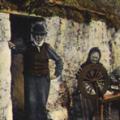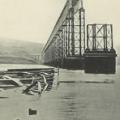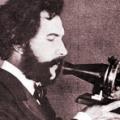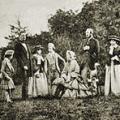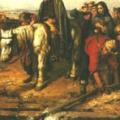Posted on February 6, 2013 by Donald
After a century of being treated worse than the cattle they lost their lands to, the government finally acknowledged that the victims of the Clearances were still being victimised and needed protective legislation.
The Napier Commission studied the situation and put forward recommendations.
Ignor...
Posted on February 6, 2013 by Donald
Designed by Sir Thomas Bouch, the Tay Railway Bridge was opened in 1878.
The single-track bridge was a box construction with numerous box-section legs, up to 230ft apart, supporting the steam trains up to 88ft in the air as they snaked for almost two miles over the Tay and Perth-bound shipping. B...
Posted on February 6, 2013 by Donald
Born on March 3, 1847 in Edinburgh, Bell is best known for his invention of the telephone however he was a remarkable character and brilliant inventor who came up with many inventions such as an air-cooling system, a way of desalinating sea-water and a sorting machine for punch-coded census cards....
Posted on February 6, 2013 by Donald
The second visit of a United Kingdom monarch to Scotland was in 1842 when Queen Victoria and Prince Albert disembarked at Leith.
Their exploration of Perthshire, walking, reading and deer-stalking, was so pleasurable that they returned annually. In 1852 they bought Balmoral and had the castle bui...
Posted on February 6, 2013 by Donald
King George IV made a royal visit to Edinburgh in 1822.
It was the first time a monarch had come to Scotland since 1641 and his tour was stage-managed by Sir Walter Scott. Scott engineered an image of Scotland similar to the country in his romantic novels for the visit.
Highland Games were re-in...
Posted on February 6, 2013 by Donald
The clan system regarded the land as belonging to their community, worked areas being passed down through the family while additional lands could be rented. As the generations passed, the clan chiefs became more wealthy and detached from their kinsmen, regarding them as their effects rather than t...

